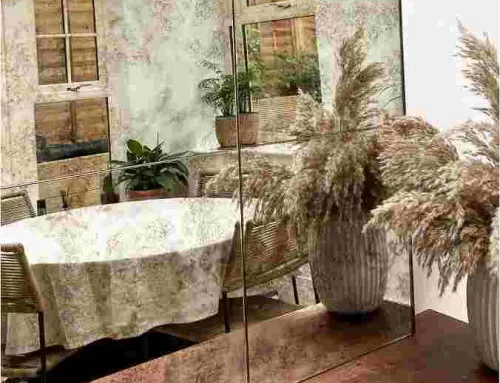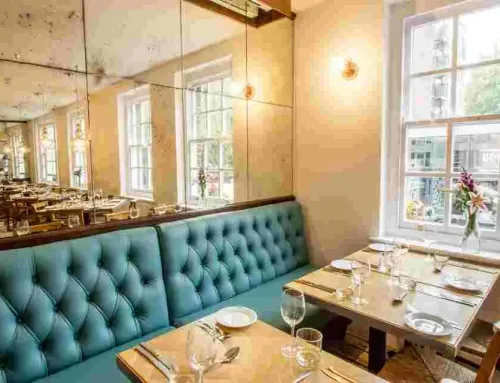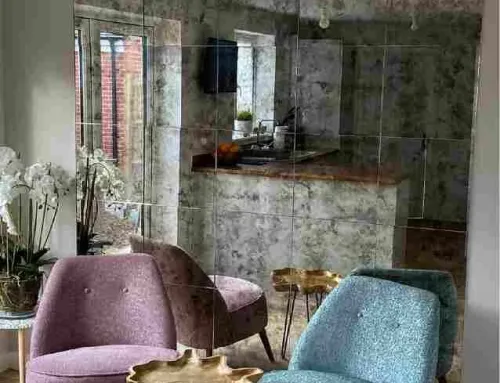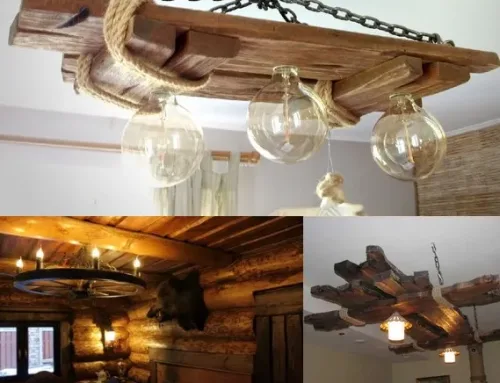How to Clean and Preserve Antique Mirrors: A Comprehensive Guide
Antique mirrors hold a unique charm that adds a touch of elegance and history to any space. However, their delicate nature requires special care and attention when it comes to cleaning and preservation. Cleaning an antique mirror requires a gentle touch and the use of appropriate materials to avoid damaging the mirror’s reflective surface or intricate frame. In this comprehensive guide, we will walk you through the step-by-step process of cleaning and preserving your treasured antique mirrors.

Understanding Antique Mirrors
Before delving into the cleaning process, it’s essential to understand the construction and materials used in antique mirrors. Antique mirrors are typically made using a combination of glass, silvering, and various coatings. The reflective surface, known as the mirror’s “silvering,” can be particularly sensitive to moisture, chemicals, and abrasives. The frame of an antique mirror may be crafted from wood, metal, or other materials, each requiring specific care.
Materials You’ll Need
- Soft, lint-free cloths or microfiber towels
- Distilled water
- Mild, non-abrasive glass cleaner
- White vinegar (optional)
- Cotton swabs
- Soft-bristle brushes
- Wooden toothpicks (for intricate detailing)
- Protective gloves
- Mild soap (for wooden frames)
- Museum wax or beeswax (for frame preservation)
Step-by-Step Cleaning Process
- Dust Removal: Begin by using a soft, dry cloth to gently remove dust and loose dirt from the mirror’s surface. Avoid using paper towels, as they can scratch the mirror. For intricate detailing, use a soft-bristle brush or a clean, dry cotton swab.
- Testing a Small Area: Before applying any cleaning solution to the entire mirror, test a small, inconspicuous area to ensure it won’t damage the silvering or frame. Apply a drop of the glass cleaner or a mixture of distilled water and mild soap, then gently wipe with a soft cloth. If there’s no adverse reaction, proceed to the next step.
- Cleaning the Mirror Surface:
- Mist a small amount of mild, non-abrasive glass cleaner onto a soft cloth or microfiber towel. Avoid spraying the cleaner directly onto the mirror to prevent moisture from seeping into the frame.
- Gently wipe the mirror’s surface using a circular motion. Do not apply excessive pressure, as this can damage the silvering. If stubborn spots persist, dampen a cotton swab with distilled water and carefully clean the area.
- For more stubborn residue, you can create a mixture of equal parts distilled water and white vinegar. Dampen a cloth with this solution and gently wipe the affected areas. Immediately follow with a clean, damp cloth to remove any residue.
- Cleaning the Frame:
- Wooden Frames: If your antique mirror has a wooden frame, use a slightly damp cloth with a mild soap solution to clean the frame’s surface. Avoid oversaturating the wood, as excessive moisture can lead to warping or damage.
- Metal or Ornate Frames: Use a dry or slightly damp cloth to gently wipe down metal or ornate frames. Be cautious with any decorative elements or intricate detailing to avoid bending or breaking.
- Drying: After cleaning, use a dry, lint-free cloth to gently pat the mirror’s surface and frame dry. Ensure that no moisture is left behind, as it can damage the silvering or wood over time.
- Frame Preservation: To maintain the beauty of the frame, you can apply a thin layer of museum wax or beeswax using a soft cloth. This will help protect the frame from dust, moisture, and minor scratches.

Preservation and Display
Caring for an antique mirror extends beyond the cleaning process, encompassing both preservation and thoughtful display. Here are some additional tips to ensure the long-lasting beauty and integrity of your cherished mirror:
When choosing a spot for your antique mirror, opt for an area that is shielded from direct sunlight, extreme temperature variations, and high humidity levels. These environmental factors can hasten the deterioration of the mirror’s delicate components and affect its overall condition over time.
To safeguard your mirror from potential harm, consider adding a protective backing or padding to the frame before hanging it. Materials like felt or archival-quality padding can act as a buffer, minimizing the risk of scratches, abrasions, or impact damage that could occur during handling or mounting.
In the case of valuable or historically significant antique mirrors, it is advisable to collaborate with a seasoned professional conservator. Regular consultations with a conservator can facilitate periodic restoration efforts that go beyond routine cleaning, ensuring the mirror’s enduring preservation and allowing its captivating story to remain vivid for generations to come.
Maintenance Tips
Proper maintenance is paramount in ensuring the enduring allure and prolonged lifespan of your cherished antique mirror. By following these meticulous care guidelines, you can safeguard its exquisite aesthetics and historical value for generations to come:
- Regular Dusting: Delicately attend to your mirror’s surface and intricate frame using a soft, lint-free cloth or an ultra-soft bristle brush. This gentle regimen serves as an indispensable defense against the gradual accumulation of dust particles, effectively diminishing the need for frequent and potentially abrasive cleaning sessions.
- Avoid Harsh Cleaners: Exercise unwavering vigilance against the use of harsh and abrasive cleaning agents or solutions that contain ammonia. The delicately crafted silvering and the meticulously embellished frame are susceptible to irreversible harm when exposed to such aggressive substances. Opt instead for mild, specialized mirror cleaning solutions that are explicitly designed to preserve the mirror’s antiquated grandeur.
- Mitigate Moisture Impact: Shield your antique mirror from environments characterized by elevated humidity levels and excessive moisture. These adverse conditions can instigate the erosion of its intricate elements, precipitating an unfortunate decline in its splendor. Your mirror’s ideal sanctuary is a well-ventilated space where it remains sheltered from the ravages of moisture-induced degradation.
- Exemplary Handling: Exercise the utmost care and circumspection when moving, repositioning, or otherwise engaging with your treasured mirror. By treating it with a blend of reverence and caution, you can mitigate the risks of inadvertent impacts or undue stress that might otherwise mar its timeless charm.
- Periodic Vigilance: Dedicate moments of introspection and appraisal to your mirror’s condition, assessing for any telltale signs of deterioration that may have insidiously emerged. Should you discern the faintest traces of flaking silvering or any vestiges of frame impairment, embark on swift remedial measures to stave off any potential exacerbation of the situation.
- Frame Fortification: Elevate your mirror’s defense against the ravages of time and environmental factors by adorning its frame with a thin, judiciously applied layer of museum-grade wax or the sublime protection of beeswax. This strategic safeguard not only acts as a sentinel against the infiltration of dust and moisture but also lends an added measure of resilience against the incidental abrasions that may beset its noble frame.
These meticulous maintenance guidelines bestow upon you the power to perpetuate the ageless elegance and historical significance encapsulated within your antique mirror. Through your unwavering commitment to its preservation, you safeguard a tangible link to the past, an exquisite testament to the artistry of a bygone era.

Bottom Line
Cleaning and preserving an antique mirror require a delicate touch and a thorough understanding of its construction. By following the steps outlined in this guide and using the appropriate materials, you can ensure that your treasured antique mirror retains its beauty and historical significance for generations to come.




